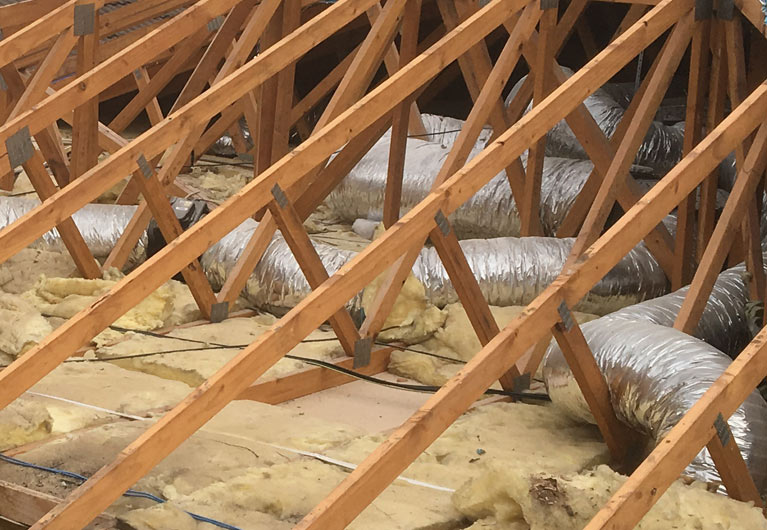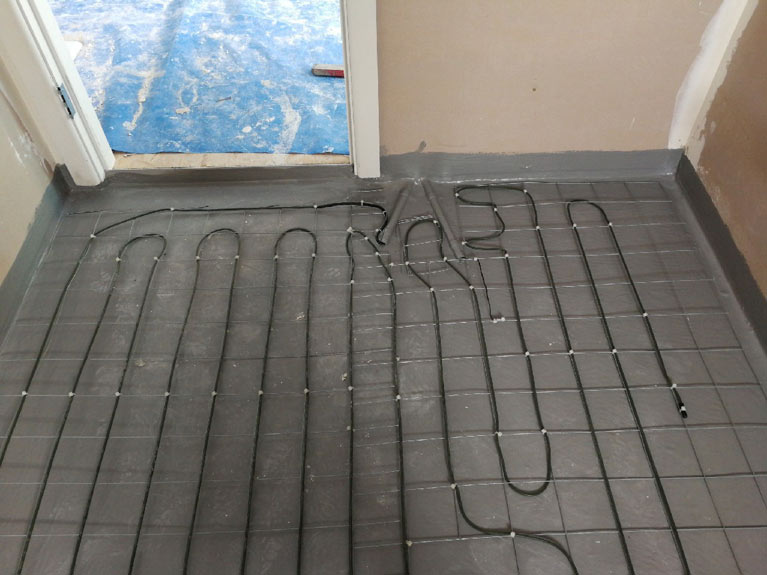
As temperatures drop over winter, we all face the dilemma of how to keep our homes warm without receiving a massive energy bill, especially since electricity and gas costs have risen in recent times.
Renovating is an excellent opportunity to make your home as thermally efficient as possible, and to install more efficient heating systems that are ‘built in’.
The other good news is that many of the ideas for keeping your home warm in winter also help keep it cool in summer.
Addbuild works on up to 80 renovations, extensions or additions a year, so we’re in a good position to share some of the smartest ways to reduce your reliance on inefficient and environmentally unfriendly means for keeping the home warm.
So ‘rug up’ now and get cosy with our top tips for when you build:
1. Insulation
Keeping the heat inside your home, and preventing the cold getting in, is a theme that underpins our first few tips. Insulation does both and should be considered for the roof, walls and floors.
With the roof, there are several options:
If you are adding another storey to your home floor, you’ll no doubt be replacing most if not all of your roof, so it’s a good opportunity to add sarking backed by insulation directly under the tiles or metal roof.
Adding insulation batts above the ceiling is something you can do whether you are replacing your roof or not, with great care required around light fittings, especially downlights.
Adding insulation to your new external walls can be done very effectively within wall cavities, within stud frames, on the outside of the stud frames, on the inside of solid walls, or on the outside of solid walls. There is a variety of materials than can be used for the insulation, often dictated by the type of walls being built.
With ground floors, you are most likely to be able to insulate when building an extension to your home. The options range from insulating the underside of suspended floors to insulating the edge or underside of slabs-on-ground.

2. Mind the Gaps
There’s intended ventilation … and unintended ventilation!
Make sure that gaps around windows and doors are eliminated or minimised. You should also ensure that any ‘intrusions’ into external walls, like pipes, are well sealed.
Floors can also be an issue with gaps between floorboards that have shrunk or between skirting boards and floors.
If you can stop drafts, you can help reduce overdrafts!
3. Glazing
Double glazing is an established option for better insulation, however there are other aspects of glazing worth noting.
The location and size of your windows can determine how much warmth you receive through them, and if you are worried that windows positioned to allow warmth in winter will allow too much heat in summer, options like shading and shutters will give you the best of both conditions.
Another alternative, albeit an expensive one right now, is ‘smart glass’ that adapts to conditions inside and outside of the home to either heat the interior or keep it cool. The glass does this by changing its light transmission properties depending on your settings, sensing and reacting to outside and inside temperatures.
4. Curtains and coverings
Renovations are also a time for the fun part … redecoration!
Choosing heavy curtains with an insulated lining helps keep the warmth in and the cold out in winter, and the reverse is true in summer. Well-fitted shutters and blinds can also help, but to a lesser extent.
Also consider what you add to the floor inside the home. Carpets and their underlays can provide good insulation, but if you like timber floors, rugs can be a flexible option.
5. ‘Built-in’ Heating: Ducted Air-Con
Whilst ducted air-conditioning might be more expensive to buy and install than single units, it can be very efficient in terms of running costs.
The system uses a compressor installed either outside or inside the ceiling space, and vents are are positioned usually in the ceiling of the rooms you want to heat (or cool).
Because the installation involves quite a bit of building alterations, this is most efficiently added to your home when you are doing renovations.

6. ‘Built-in’ Heating: Underfloor Heating
We tend to get more call for underfloor heating in bathrooms where there is inevitably a concrete slab, but this is now more common elsewhere in the home as concrete has become a more popular type of flooring.
Electric wiring or water pipes are installed into the concrete. A smart tip is to heat the slab using cheaper off-peak electricity because it retains heat for a fair time, allowing you to keep your home warm during the day.
Again, given the nature of the construction of this type of heating, you might only consider adding this during more substantial building work rather than cosmetic renovations.

Keeping your home warm by preventing heat loss (or cold ‘gain’) and using efficient energy sources are a win-win for your back pocket and the environment. The ideas above aren’t the only options available, just the ones we see being used most often when people are renovating their homes.
This advice is just a part of Addbuild’s “concept-to-completion” service: knowledge and experience we’ve gained from over 40 years in the trade. If you are considering a renovation, addition or extension, we’d love to hear from you, so call our helpful team on (02) 8765 1555 or contact us using our online form.




